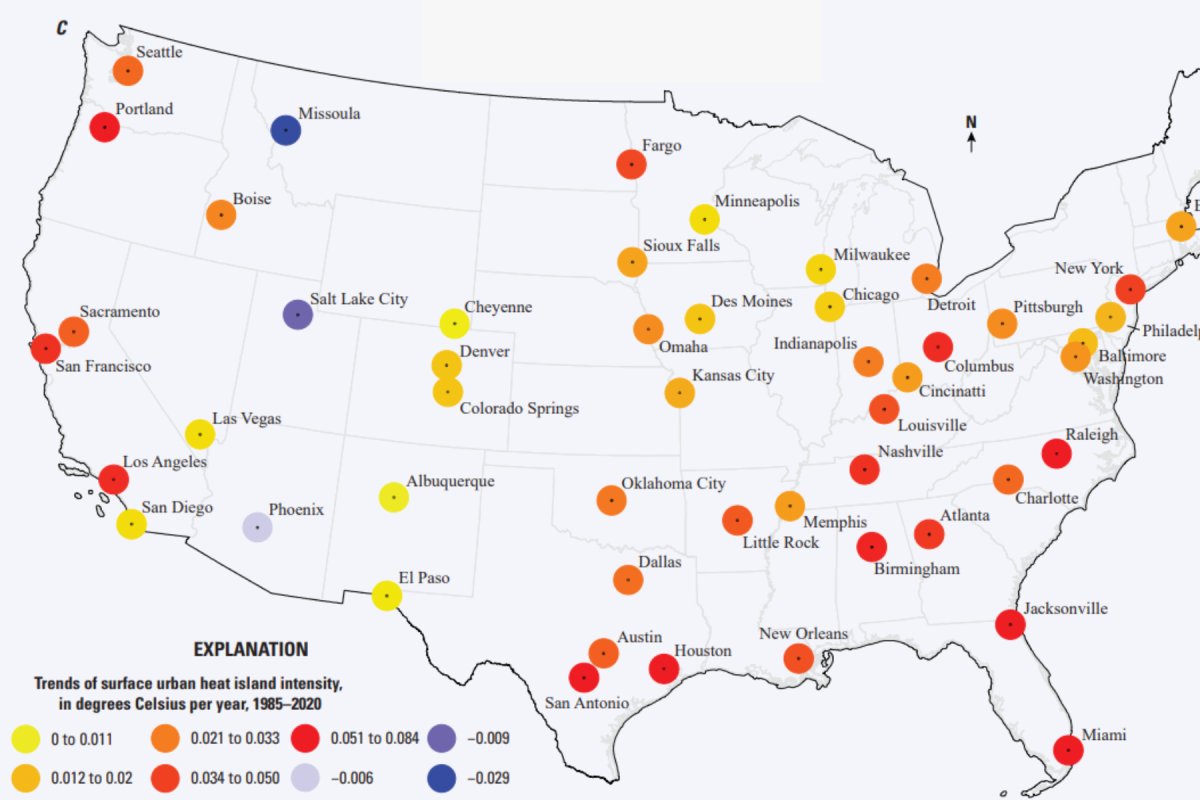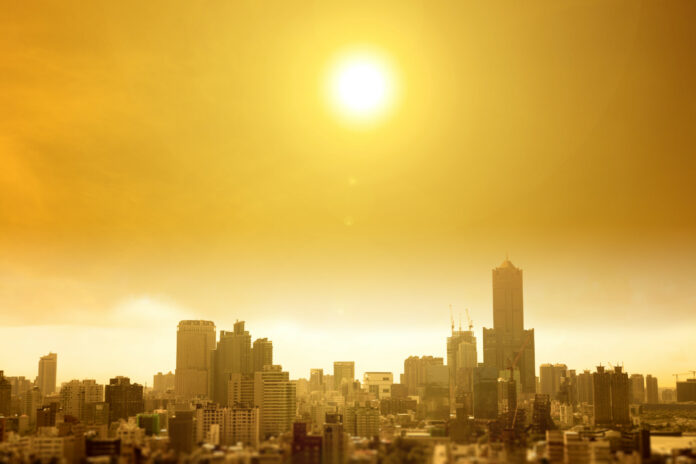U.S. cities are getting hotter and hotter, threatening the health and even the lives of millions of residents across the country.
These urban heat islands—representing hotspots that are warmer than the surrounding non-urban land—are increasingly getting warmer. This is according to a study by the United States Geological Survey (USGS), which found that 47 of 50 cities experienced significant warming between 1985 and 2020.
Across all 50 cities, the study found an average warming of intensity of 5.19 degrees Fahrenheit, with the highest intensities being found near the West Coast and in the eastern third of the country.
ISTOCK / GETTY IMAGES PLUS
The study shows that the cities with the greatest rate of increase in heat intensity include San Antonio, Houston, Los Angeles, Portland, San Francisco, Miami, Jacksonville, Birmingham, Raleigh, Columbus, Jacksonville, Atlanta, and New York.
Much of this increased heating may have come from changes to land use, as well as the effects of climate change. By removing green spaces and replacing them with infrastructure, the city becomes more prone to absorbing heat rather than reflecting it away.
“During the last 40 years, urban population in the United States has increased by more than 6.3 percent, and more than 80 percent of the U.S. population resides in urban areas,” George Xian, an author of the study and a USGS Earth Resources Observation and Science (EROS) Center research physical scientist, wrote in the paper.
“One of the changes associated with urbanization is the change of landscape features to structures such as buildings, roads, and other infrastructure that absorb and re-emit the heat of the sun more than natural landscapes such as forests and water bodies,” Xian added.
“This land-cover transition can result in an urban surface temperature that is higher than in a non-urban area, which is defined as a surface urban heat island (SUHI). A SUHI has a profound effect on the lives of urban residents and can exacerbate the risk of heat-related mortality associated with global climate change,” he said.
This increased heat in cities pose a major threat to the people living within them, especially the elderly, and those with medical conditions. For those without air conditioning, this is an even greater risk. The U.S. Environmental Protection Agency says that extreme heat is the deadliest form of weather event in the country.
“For example, for the northwestern part of the U.S., traditionally they don’t have any air conditioning. But, with this heat continuing in the future, how are they going to deal with this challenge? So, we expect our data can provide valuable information for society to deal with climate challenges,” Xian said in a statement.
Xian added he hopes that these findings will make it clear the risk that heat poses in large cities in the coming years, especially as the effects of climate change further increase the global temperatures.
“Now people can see this is not just a regional or local issue,” Xian said. “This is a national challenge.”

USGS
He added he hopes that the data may provide cities with some idea of what to do to prevent further intensifying of heat, pointing their resources in the right direction, such as increasing green space coverage.
“Monitoring and tracking the long-term trends of SUHI can help determine where and when heat-related hazards may happen and better protect vulnerable populations and underserved communities. The information can be used to develop strategies to mitigate and manage the hazards of extreme heat at national, regional, and local scales,” Xian wrote in the paper.
Do you have a tip on a science story that Newsweek should be covering? Do you have a question about heat? Let us know via [email protected].
Uncommon Knowledge
Newsweek is committed to challenging conventional wisdom and finding connections in the search for common ground.
Newsweek is committed to challenging conventional wisdom and finding connections in the search for common ground.


